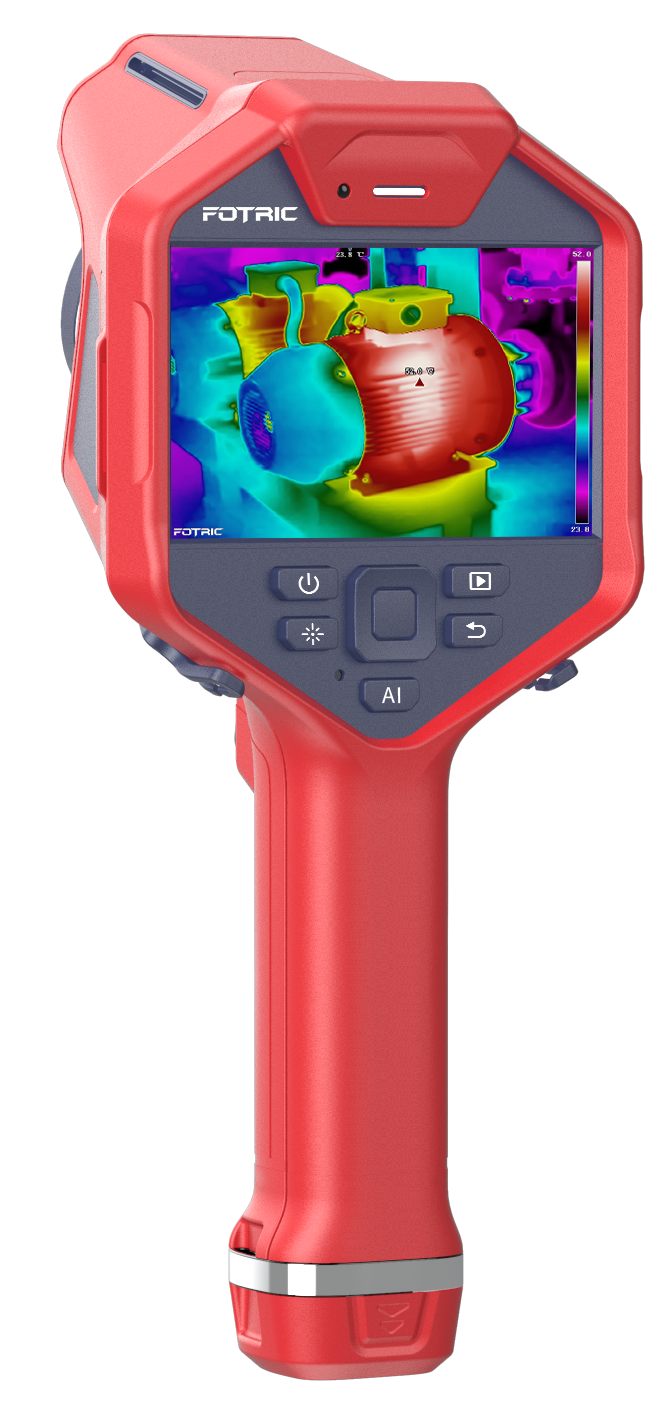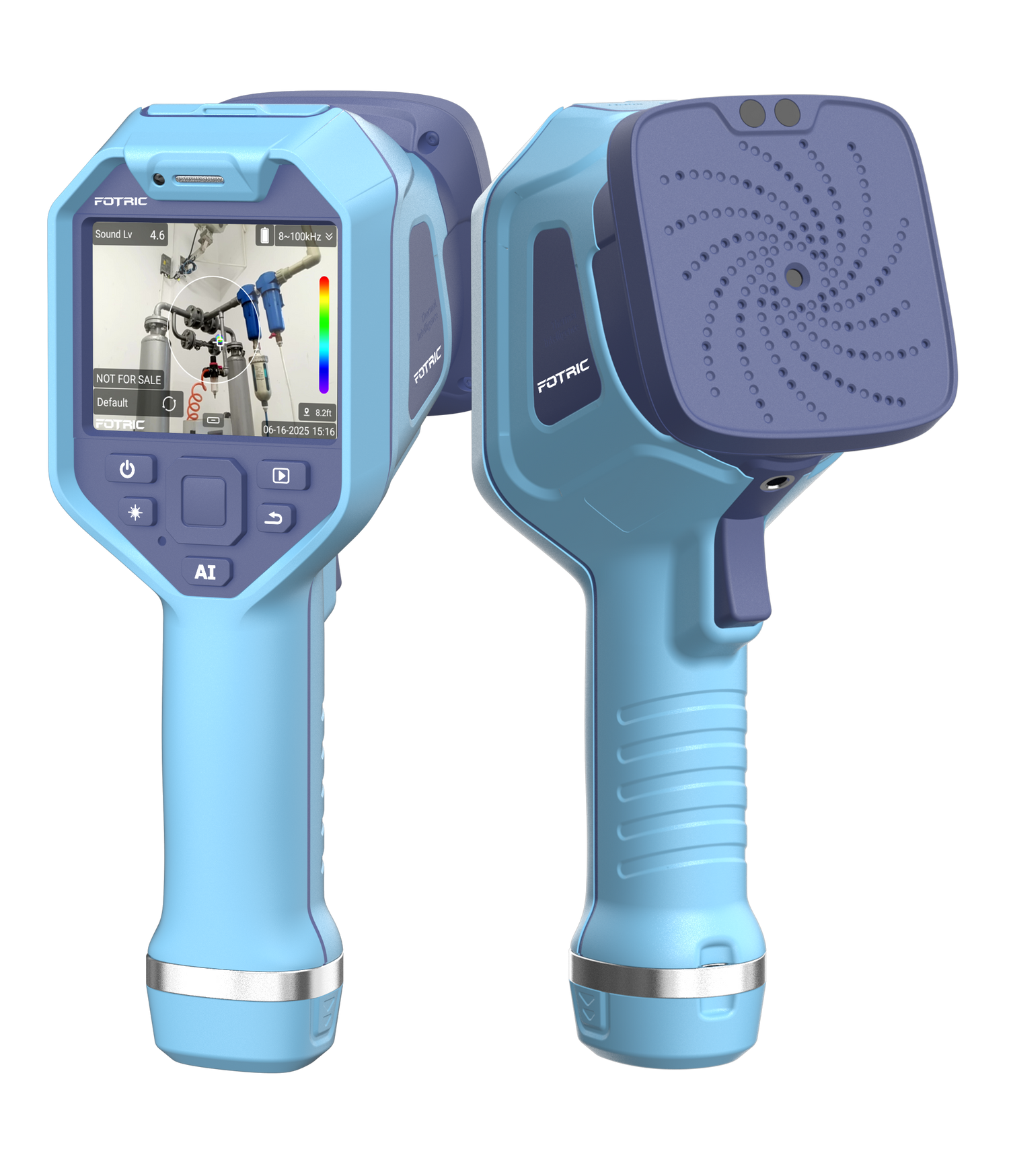Infrared Thermal Imaging Camera Introduction

An infrared thermal imager is a measurement device that works without making any form of contact. These devices detect infrared energy at temperatures over absolute zero and make the conversion from energy factor to a thermogram.
Why is the Thermal Imaging Camera used?
Although you get single temperatures at a specific spot with spot infrared thermometers, the thermal cameras provide a holistic view. To find problems across many fields and applications, then you will definitely be served well by thermal imaging.
What is the reason for me to measure the prevalent temperature in my application with a thermal imager?
With thermal imaging cameras, you have the ability to measure temperatures in unconventional applications. These are scenarios where objects aren’t static, or where you need to ensure measurements without making contact because of hazard and contaminations. You also have instances where distances are too large, or where thermocouples and other sensors won’t be able to handle the high temperatures.
The thermal imagers provide images that show the temperature difference of the objects being measured. You can see hot spots immediately as well.
Why is resolution important?
A camera with a higher resolution will help you to find problems at greater distances. You can find significant issues that could be otherwise missed with low-resolution cameras.
What are the most important points of consideration that I need to look out for when choosing my thermal imager?
When it comes to thermal imagers, some of the most important considerations include the specific kind of surface that you’re measuring, the field of view, mounting (handheld portable or fixed mount), the spectral response (especially when you consider factors such the effects of the atmosphere or the means of transmitting through surfaces), and temperature range.
There are also some other considerations, such as the preferred signal processing, mounting limitations, response time, viewing port applications, and the environment.
What is meant by Field of View, and why is it important?
The field of view is the angle of vision where the instrument works, and it is determined by the unit’s optics. Accurate readings require that the target being measured should be able to fill the instrument’s field of view.
How is emissivity defined, and what exactly is its relation to the measurements on infrared temperature?
Simply put, we define emissivity as the ratio an object’s energy radiation at a specific temperature to the energy a perfect radiator emits.
A blackbody has a 1.0 emissivity, and al emissivity values range between 0.0 and 1.0. Most infrared thermometers are able to compensate for varying emissivity values. In general, an object with a higher emissivity makes it easier to obtain accurate measurements with infrared. Objects with emissivities below 0.2 can be more difficult applications.
Five Ways to Determine Emissivity
The emissivity of a material can be determined in five separate ways:
- Heat a sample of the material to a known temperature, with the use of a sensor, and use the IR instrument to measure the temperature. Then, adjust the emissivity value to help the indicator display the right readings.
- If you have low temperatures (up to 500°F), you can measure a piece of masking tape, with a 0.95 emissivity. Then, adjust the emissivity value to let the indicator display the material’s correct temperature.
- High-temperature measurements will need a hole depth (at least six times the diameter) drilled into the object. The hole acts as a blackbody. Measure the temperature in the hole, then you can adjust the emissivity from there.
- If you can paint the material, then a dull black paint will be able to get a 1.0 emissivity. Measure the paint’s temperature, then adjust the emissivity accordingly.
- You can get standardized emissivity values for most materials. With these, it becomes easier to estimate the materials’ emissivity values.
Which Thermal Imager should I use for my application?
Depending on the kind of budget you have, you should get an infrared camera that provides the very highest level of image quality and detector resolution
The vast majority of infrared cameras come with lesser pixels than the visible-light camera options. To wit, keep detector resolution in mind. Infrared cameras with higher resolution can measure smaller targets from long distances and create sharper images.
Also, now the difference between display and detector resolution. Some manufacturers boast of high-resolution LCD, while their resolution detectors are low.
If the need arises to make presentations of your findings, then you will need a system that comes with a visible-light camera, as well as a laser pointer and an illuminator lamp
With digital photos that correspond to your IR images, you can easily document a problem and communicate locations better as well.
Select a camera that delivers accurate and repeatable results.
With infrared cameras, you get to see differences in heat and measure them. For the best results, your thermal imager must not be lower than ±2% accuracy.
You should also get a thermal imager which consists of specific camera equipment that will provide emissivity and reflective temperature values.
Look for an IR camera that stores and outputs standard file formats.
A lot of infrared cameras are able to store images in a proprietary format that can be read and analyzed only by specialized software. With standard JPEG and full temperature analysis, you can Email IR images to your co-workers without losing any important information. Also, get an infrared camera that lets you record radiometric video directly in the camera, or with a computer.
Consider Internet Connection - Wi-Fi or Data
New measurement and test tools help you to transmit diagnostic data to the camera. The data is automatically annotated, and embedded to support IR findings.
Wi-Fi and mobile device apps make it easy to send thermal images and IR inspection reports from one part of a facility to another or via Email from the field. This especially helps when the time is short.
Ergonomic Features
With a lighter camera, your shoulder gets to carry less weight while you inspect. Some cameras have lens systems that tilt along a 120-degree axis, which will help a great deal.
Extra buttons also make the cameras easy to operate, as opposed to waking through menus with a single button.
Picture-in-Picture (P-i-P) and/or image fusion
It helps you to combine visible-light images and thermal images to generate comprehensible reports.
Reporting and Analysis Software
Can you use the camera to create instant reports, or do you need Wi-Fi enabled cameras on mobile devices?
Can the camera perform various tasks, from custom radiometric calibrations to single spot measurements?
Can it create data analyses with third-party software like MatLab™ or Excel?
Temperature Range
It’s important to consider the camera’s sensitivity and temperature range. With the range, you get the maximum and minimum temperatures that can be measured (-4°F to 1,202°F is a typical example).
Protect your Investment
Get a camera with a comprehensive, extended warranty program that will keep you protected in the long term.
Technical Support and Training
The level of technical support and customer service will be important in making your decision on purchasing an infrared camera.
See "12 Things to Know Before Buying a Thermal Camera" to learn more in-depth information.

